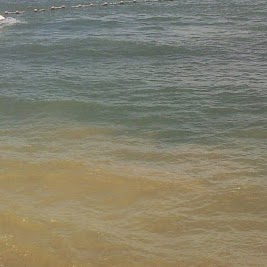John Z Zhong
age ~64
from Cupertino, CA
- Also known as:
-
- John Zhang
- John Zhang Xiao
- Xiao Dan Zhang
- John Z Hong
- John H Ong
- Xiaodan Zhang
- Phone and address:
-
10192 Park Cir E, Cupertino, CA 95014
4084460615
John Zhong Phones & Addresses
- 10192 Park Cir E, Cupertino, CA 95014 • 4084460615
- 20975 Valley Green Dr #295, Cupertino, CA 95014
- 10442 Chisholm Ave, Cupertino, CA 95014 • 5628832165
- 1669 Hollenbeck Ave #2, Sunnyvale, CA 94087
- San Jose, CA
- Pleasanton, CA
- San Marcos, CA
- Vista, CA
Resumes

John Zhong
view sourceLocation:
United States
Name / Title
Company / Classification
Phones & Addresses
Partner
Petro Canada Service Station
Granville & 65th Service Centre. 665845 BC Ltd.
Service Stations-Gasoline & Oil. Automobile Repairing & Service
Granville & 65th Service Centre. 665845 BC Ltd.
Service Stations-Gasoline & Oil. Automobile Repairing & Service
8072 Granville St, Vancouver, BC V6P 4Z4
6042661482, 6042662632
6042661482, 6042662632
President
AMLOGIC, INC
Mfg Semiconductors/Related Devices
Mfg Semiconductors/Related Devices
2518 Msn College Blvd SUITE 120, Santa Clara, CA 95054
3930 Freedom Cir, Santa Clara, CA 95054
4088509688
3930 Freedom Cir, Santa Clara, CA 95054
4088509688
Partner
Petro Canada Service Station
Service Stations-Gasoline & Oil · Automobile Repairing & Service
Service Stations-Gasoline & Oil · Automobile Repairing & Service
6042661482, 6042662632
President
LTI SYSTEMS, INC
Business Services · Business Services, Nec, Nsk
Business Services · Business Services, Nec, Nsk
25631 Ln Lanne Ct, Los Altos, CA 94022
115 Las Palmas Ct, Fremont, CA 94539
115 Las Palmas Ct, Fremont, CA 94539
Owner
Cmj Machining Co
Mfg Industrial Machinery · Mfg Misc Fabricated Metal Products · Metal Restoration
Mfg Industrial Machinery · Mfg Misc Fabricated Metal Products · Metal Restoration
5124 Calle Del Sol, Santa Clara, CA 95054
4089829373, 4089829508, 4085868822
4089829373, 4089829508, 4085868822
President
AMLOGIC, INC. WHICH WILL DO BUSINESS IN CALIFORNIA AS DELAWARE AMLOGIC, INC
3930 Freedom Cir SUITE 101, Santa Clara, CA 95054
Us Patents
-
Circuit Simulation Using Encoding Of Repetitive Subcircuits
view source -
US Patent:6865525, Mar 8, 2005
-
Filed:Jan 30, 2001
-
Appl. No.:09/774989
-
Inventors:John Xiaoxiong Zhong - Fremont CA, US
-
Assignee:Synopsys, Inc. - Mountain View CA
-
International Classification:G06F017/50
-
US Classification:703 14
-
Abstract:A method and apparatus for simulating a circuit is described. In one embodiment, the method comprises representing a plurality of identical components in a reduced form as a circuit having a single instance of the identical component with encoding for each input of the single instance to represent corresponding inputs to all of the plurality of identical components and decoding for each output port of the single instance to create output ports for the outputs associated with all of the plurality of identical components and symbolically simulating the reduced form of the circuit with simulation results being the same as results of symbolically simulating the plurality of identical components.
-
Simultaneously Simulate Multiple Stimuli And Verification Using Symbolic Encoding
view source -
US Patent:6938228, Aug 30, 2005
-
Filed:Jul 19, 2002
-
Appl. No.:10/199539
-
Inventors:John Xiaoxiong Zhong - Fremont CA, US
-
Assignee:Synopsys, Inc. - Mountain View CA
-
International Classification:G06F017/50
-
US Classification:716 4, 716 5, 703 14, 703 19
-
Abstract:A method and apparatus for simulating multiple stimuli using symbolic encoding. In one embodiment, the method comprises encoding a plurality of sets of stimulus to create a symbolic stimulus, symbolically simulating a device under test, including applying the symbolic stimulus to the device under test, and outputting a symbolic result from the device under test in response to the symbolic stimulus.
-
Cosmetically Uniform Reflective Border Area In A Transflective Display
view source -
US Patent:7522236, Apr 21, 2009
-
Filed:Sep 23, 2005
-
Appl. No.:11/234789
-
Inventors:Shawn R. Gettemy - San Jose CA, US
John Z. Zhong - Cupertino CA, US
Sherridythe Anne Fraser - Saratoga CA, US
Wei Chen - Palo Alto CA, US -
Assignee:Apple Inc. - Cupertino CA
-
International Classification:G02F 1/1335
G02F 1/1333
G02F 1/1339 -
US Classification:349114, 349110, 349153
-
Abstract:One embodiment of the present invention provides a transflective display in which a border area adjacent to an active area has a reflectivity that is substantially the same as the active area when the display is turned off. This display includes a polarizer layer, a color filter glass (CFG) layer, a liquid crystal layer, and a reflector layer. The CFG layer contains color filters in the active area, while the border area of the CFG layer is designed to have a reflectivity that is substantially the same as the active area when the display is turned off.
-
Display That Emits Circularly-Polarized Light
view source -
US Patent:7683983, Mar 23, 2010
-
Filed:Aug 8, 2006
-
Appl. No.:11/500677
-
Inventors:John Z. Zhong - Cupertino CA, US
Wei Chen - Palo Alto CA, US
Cheng Chen - Kent OH, US
Victor H. E. Yin - Cupertino CA, US
Shawn R. Gettemy - San Jose CA, US -
Assignee:Apple Inc. - Cupertino CA
-
International Classification:G02F 1/1335
-
US Classification:349 98, 349 96
-
Abstract:One embodiment of the present invention provides a display that emits circularly-polarized light. This display includes a display mechanism that emits linearly-polarized light and a layer placed in the path of the linearly-polarized light. The layer receives the linearly-polarized light on one surface, converts the linearly-polarized light to circularly-polarized light, and then emits the circularly-polarized light from another surface. By emitting circularly-polarized light, the display reduces the perceived distortion found at some angles when the display is viewed through a linearly-polarizing filter.
-
Full Perimeter Chemical Strengthening Of Substrates
view source -
US Patent:7810355, Oct 12, 2010
-
Filed:Jun 30, 2008
-
Appl. No.:12/165336
-
Inventors:Casey J. Feinstein - San Jose CA, US
John Z. Zhong - Cupertino CA, US -
Assignee:Apple Inc. - Cupertino CA
-
International Classification:C03C 25/00
C03C 21/00 -
US Classification:65 301, 65 3014, 65 31, 65105, 216 20, 216 83, 216 97
-
Abstract:Methods and apparatus for protecting the thin films during chemical and/or thermal edge strengthening treatment. In one embodiment, a portion of each individual sheet is laminated. Pairs of sheets are then sealed together such that the thin film sides face inward to form a thin film sandwich. In some embodiments, the sandwich in then immersed in a chemical strengthener. In other embodiments, a localized treatment is applied to the unstrengthened edges.
-
Led Backlight For Display Systems
view source -
US Patent:7841759, Nov 30, 2010
-
Filed:Oct 10, 2007
-
Appl. No.:11/870360
-
Inventors:Wei Chen - Palo Alto CA, US
Jun Qi - Corona CA, US
Victor Yin - Cupertino CA, US
John Zhong - Cupertino CA, US -
Assignee:Apple Inc. - Cupertino CA
-
International Classification:F21V 33/00
-
US Classification:362612, 362800
-
Abstract:An LED backlight method and apparatus for display systems provides a plurality of light emitting diodes having different white point colors. At least two of the light emitting diodes having different white point colors are selected to produce a light of a predetermined white point color when the light outputs of the selected light emitting diodes are mixed. The selected light emitting diodes are mounted on a display panel in a predetermined order at spatially distributed positions for mixing their light outputs to produce the light of the predetermined white point color to illuminate the display panel with the light of the predetermined white point color.
-
Integrated Touch Screen
view source -
US Patent:7859521, Dec 28, 2010
-
Filed:Apr 8, 2010
-
Appl. No.:12/756834
-
Inventors:Steven Porter Hotelling - San Jose CA, US
Marduke Yousefpor - San Jose CA, US
Shih Chang Chang - Cupertino CA, US
John Z. Zhong - Cupertino CA, US -
Assignee:Apple Inc. - Cupertino CA
-
International Classification:G09G 5/00
-
US Classification:345173, 178 1803
-
Abstract:Displays with touch sensing circuitry integrated into the display pixel stackup are provided. Circuit elements, such as touch signal lines, such as drive lines and sense lines, grounding regions, in the display pixel stackups can be grouped together to form touch sensing circuitry that senses a touch on or near the display. An integrated touch screen can include multi-function circuit elements that can operate as circuitry of the display system to generate an image on the display, and can also form part of a touch sensing system that senses one or more touches on or near the display. The multi-function circuit elements can be, for example, capacitors in display pixels that can be configured to operate as storage capacitors/electrodes, common electrodes, conductive wires/pathways, etc. , of the display circuitry in the display system, and that may also be configured to operate as circuit elements of the touch sensing circuitry.
-
Display That Emits Circularly-Polarized Light
view source -
US Patent:7911565, Mar 22, 2011
-
Filed:Jan 19, 2010
-
Appl. No.:12/689762
-
Inventors:John Z. Zhong - Cupertino CA, US
Wei Chen - Palo Alto CA, US
Cheng Chen - Kent OH, US
Victor H. E. Yin - Cupertino CA, US
Shawn R. Gettemy - San Jose CA, US -
Assignee:Apple Inc. - Cupertino CA
-
International Classification:G02F 1/1335
-
US Classification:349 98, 349 96
-
Abstract:One embodiment of the present invention provides a display that emits circularly-polarized light. This display includes a display mechanism that emits linearly-polarized light and a layer placed in the path of the linearly-polarized light. The layer receives the linearly-polarized light on one surface, converts the linearly-polarized light to circularly-polarized light, and then emits the circularly-polarized light from another surface. By emitting circularly-polarized light, the display reduces the perceived distortion found at some angles when the display is viewed through a linearly-polarizing filter.
Googleplus

John Zhong
Work:
Homeoffice

John Zhong

John Zhong

John Zhong

John Zhong
Work:
Circuitech - PCB Sales
About:
PCB Provider(HDI, eg.: Anylayer stackup structure etc.)

John Zhong

John Zhong

John Zhong
Flickr
Myspace
Plaxo

Zhong, John
view sourceHong Kong

John zhong
view source经理 at 中国华源集团有限公司
Youtube
Get Report for John Z Zhong from Cupertino, CA, age ~64














